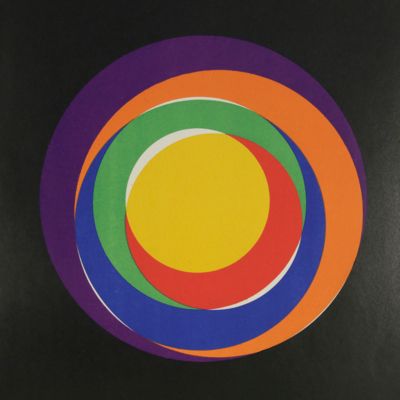Bill, M.
Quinze variations sur un même thème.
Paris, Editions des chroniques du Jour, 1938. Square 4to (32.3 x 30.6 cm). Half-title, title, 9 pp.; 16 lithographed plates (mostly printed in colour). Original printed softcover.
Number 186 of a limited edition of 200 copies. Max Bill (1908-1994) was a Swiss architect, artist, painter, typeface designer, industrial designer and graphic designer. From 1937 onwards he was a prime mover behind the Allianz group of Swiss artists. "Bill is widely considered the single most decisive influence on Swiss graphic design beginning in the 1950s with his theoretical writing and progressive work. His connection to the days of the Modern Movement gave him special authority. As an industrial designer, his work is characterized by a clarity of design and precise proportions. As a designer and artist, Bill sought to create forms which visually represent the New Physics of the early 20th century. He sought to create objects so that the new science of form could be understood by the senses: that is as a concrete art. Thus Bill is not a rationalist - as is typically thought - but rather a phenomenologist: one who understands embodiment as the ultimate expression of a concrete art. In this way he is not so much extending as re-interpreting Bauhaus theory. Yet curiously Bill's critical interpreters have not really grasped this fundamental issue. He made spare geometric paintings and spherical sculptures, some based on the Möbius strip - in stone, wood, metal and plaster. His architectural work included an office building in Germany, a radio studio in Zurich, and a bridge in eastern Switzerland. He continued to produce architectural designs, such as those for a museum of contemporary art (1981) in Florence and for the Bauhaus Archive (1987) in Berlin. In 1982 he entered a competition for an addition to the Neue Nationalgalerie in Berlin, built to a design by Mies van der Rohe." (Wikipedia). In the present work he wrote "I feel that a great many of those who are interested in art have no clear idea how works of art are created and are without any clear understanding of the internal and external construction of such works" (English preface). A tiny, skilful repair to the lower edge of the front cover and upper part of spine; otherwise, a very good, clean copy.




